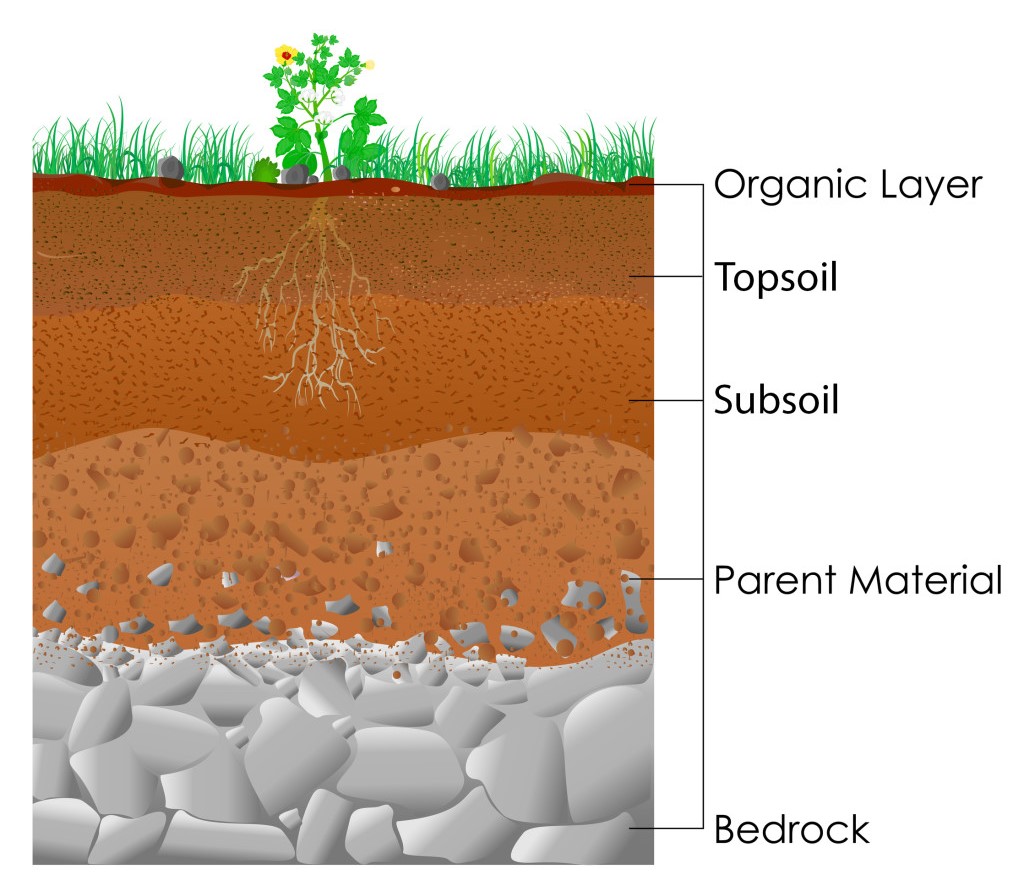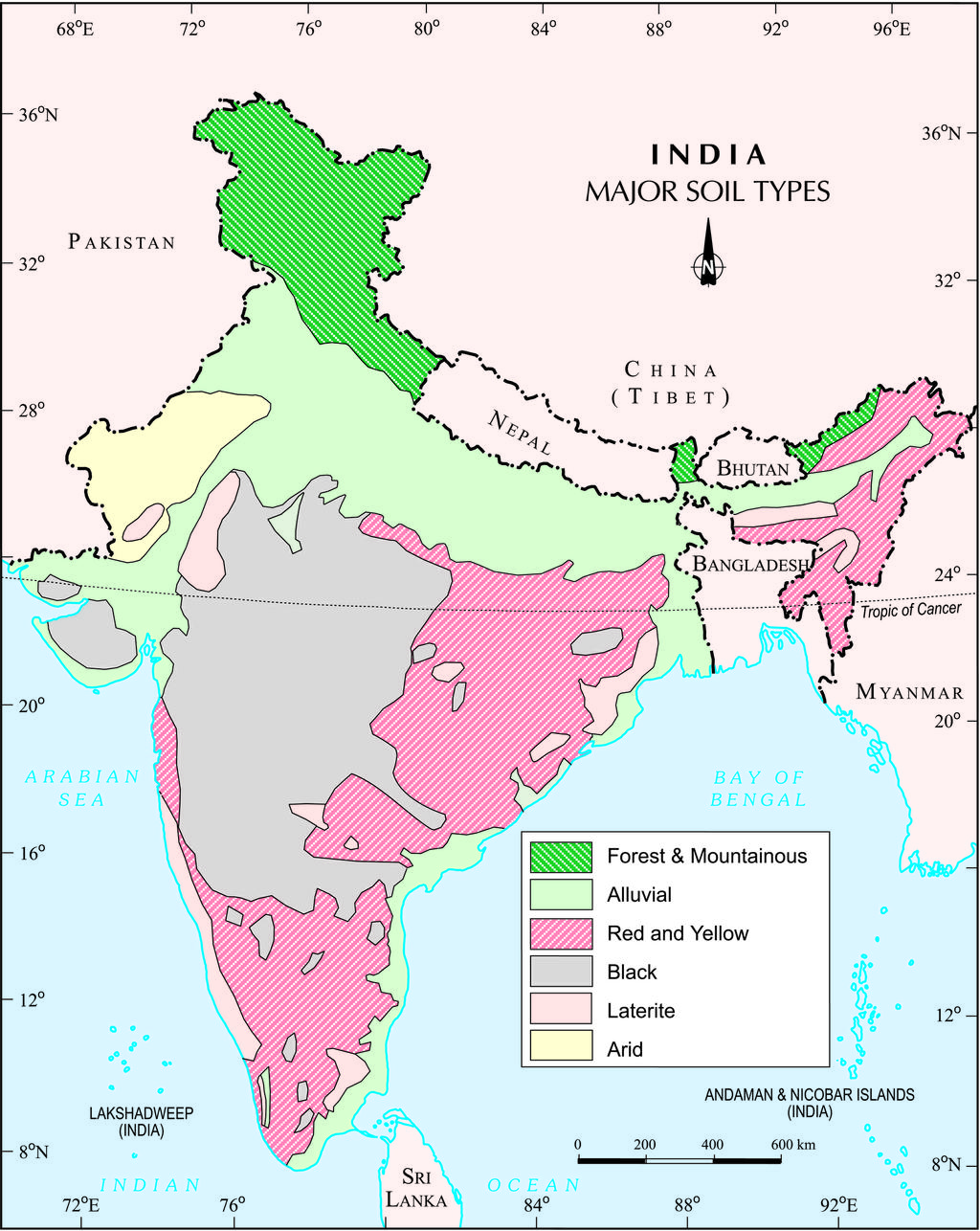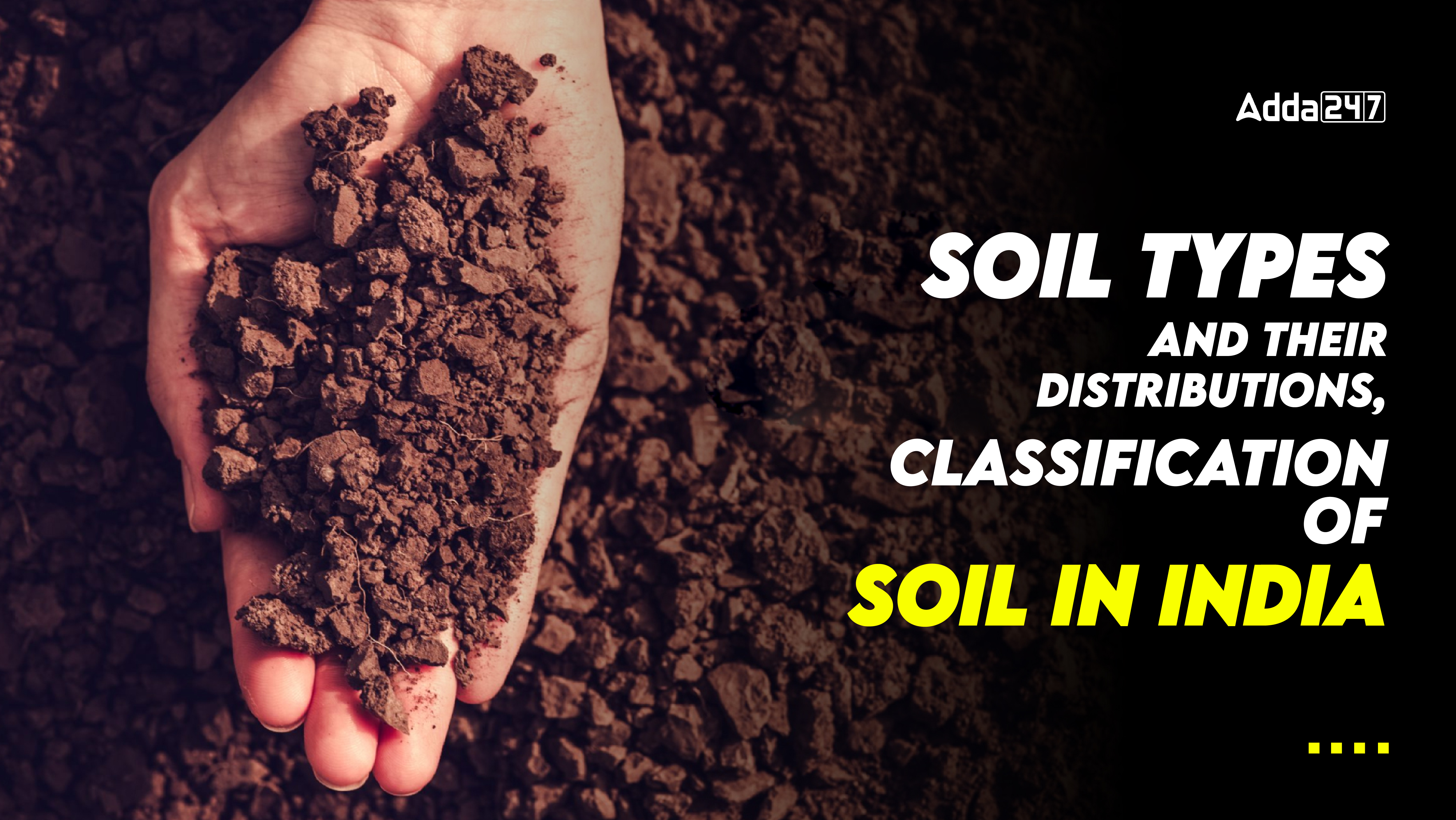Table of Contents
If you are a UPSC aspirant, you must be aware of the importance of Geography subject. Soil is a significant topic in Geography which you will see in every shift of the exam. This topic plays a vital role in GS-I and GS-II, especially in GS-I in the Mains exam. In this article, you will get detailed information about Soil, including different types of soils and their distribution, as well as the classification of soil in India. Properties of different types of soils, their use, and conservation methods are part of the knowledge required for UPSC Geography subject, which is useful not only in prelims but also in the Mains exam.
History of Soil, Types, and Distributions
Soil is a precious resource from which most of man’s food and clothing come, as these are produced from land-based crops grown in the soil. The soil we depend on for our everyday needs is formed over thousands of years. Various agents of weathering and gradation act on the parent material to form a thin layer of soil.
Types of Soil
When we dig a hole in the ground and examine the soil, we typically find three distinct layers, known as strata. These layers can be divided into three different parts to better understand the composition and characteristics of the soil. Here’s a breakdown:
- A- TOPSOIL- The uppermost layer of soil is called topsoil. This is the zone where organic matter combines with minerals, nutrients, and water necessary for plant growth.
- B- SUBSOIL- There is a transition section between bed ‘A’ and bed ‘C’ which receives material from both above and below. It contains some organic matter, although weathering of the mineral matter is clearly visible.
- C- BEDROCK- The bedrock is formed from loose parent material. This layer is the first stage in the soil formation process and eventually the two layers above it develop.

Types of Soil in India with Percentage
India has a wide variety of soil types, and to improve the understanding of these, the Indian Council of Agricultural Research (ICAR) has classified Indian soils into the following categories based on the soil origin, colour, structure, and location. This classification is based on the soil classification system of the United States Department of Agriculture (USDA).
| Sr. no. | Types | Area (in thousand hectares) | Percentage |
| I. | Inceptisols | 130372.90 | 39.74 |
| II. | Entisols | 92131.71 | 28.08 |
| III. | Alfisols | 44448.68 | 13.55 |
| IV. | Vertisols | 27960.00 | 8.52 |
| V. | Aridisols | 14069.00 | 4.28 |
| VI. | Ultisols | 8250.00 | 2.51 |
| VII. | Mollisols | 1320.00 | 0.40 |
| VIII. | Others | 9503.10 | 2.92 |
| Total | 100% | ||
Classification of India Soil
The soil of India has been classified into the following types on the basis of origin, colour, composition and location:
- Alluvial Soils
- Black Soils
- Red & Yellow Soils
- Laterite Soils
- Forest and Mountain Soils
- Arid or Desert Soils
- Saline and Alkaline Soils
- Peat and Marshy Soils

Alluvial Soils
Alluvial soils are found in vast areas of the northern plains and river valleys of India, covering about 40 per cent of the country’s total area. In the peninsular region, these soils are also found in the deltas and valleys of the eastern coast rivers. Alluvial soils range from sandy loam to clay in composition. They are generally high in potash and low in phosphorus. Two types of alluvial soils called ‘Khadar’ and ‘Bangar’ have developed in the upper and middle plains of the Ganga. Khadar is the new alluvial soil deposited by floods every year and increases the fertility of the soil due to fine silt. Bangar is the old alluvial soil deposited away from the flood prone areas. Calcium concretions or pebbles are found in Khadar and Bangar soils. Intensive agriculture is carried out on these soils.
Black Soils
Black soils are found in most parts of the Deccan Plateau, including parts of Maharashtra, Gujarat, Andhra Pradesh and Tamil Nadu. Dark black soils are found in the upper reaches of the Godavari and Krishna rivers and in the northwestern regions of the Deccan Plateau. These soils are also called ‘Regar’ and ‘Black Cotton Soil’. During the dry season, these soils develop wide cracks, allowing crops, especially rainfed crops, to continue to receive moisture even during the dry season, allowing them to grow well. Chemically, black soils are rich in lime, iron, magnesium and alumina. They also contain a considerable amount of potash. The colour of these soils varies between dark black and grey.
Red & Yellow Soils
Yellow and red soils are found in parts of Odisha and Chhattisgarh and in the southern regions of the middle Ganga plain. Red soils have developed in the eastern and southern parts of the Deccan Plateau in areas of low rainfall where crystalline igneous rocks are found. The red colour of this soil is due to the extensive diffusion of iron in crystalline and metamorphic rocks. This soil appears yellow when mixed with water. Red and yellow soils with fine particles are generally fertile, while the coarser grained upland soils are unproductive.
Laterite Soils
The word laterite comes from the Latin word ‘later’, which literally means brick. Laterite soils are formed in areas with high temperatures and heavy rainfall. Bacteria that thrive in high temperatures rapidly destroy the humus content. These soils lack organic matter, nitrogen, phosphate and calcium, while having excess of iron-oxide and potash. For this reason laterite soils are not considered fertile enough for agriculture. However, red laterite soils are more suitable for cultivation of tree crops like cashew in Tamil Nadu, Andhra Pradesh and Kerala. Laterite soils are mainly found in the hilly areas of Karnataka, Kerala, Tamil Nadu, Madhya Pradesh, Odisha and Assam.
Mountain and Forest Soils
Mountain soil is found in forest areas where there is adequate rainfall. On the upper slopes, this soil is coarse grained, while towards the valleys it is loamy and silty. In the snowy regions of the Himalayas, this soil undergoes the process of denudation and is acidic due to low humus content. The soil found in the lower valleys is fertile. This type of soil is also called forest soil.
Arid or Desert Soils
The colour of dry soils ranges from red to raisin. These soils are generally sandy in texture and saline in nature. In some areas, these soils have so much salt content that salt can be obtained by evaporating water. Due to dry climate, high temperature and rapid evaporation, these soils have low moisture and humus content. These soils have developed especially in the areas with typical dry topography of western Rajasthan. Due to lack of humus and organic matter in these soils, they are infertile.
Saline and Alkaline Soils
Saline soils are found in arid and semi-arid areas as well as waterlogged areas and swamps. These are also called barren soils. These soils have high amounts of sodium, potassium, and magnesium, due to which they are infertile and no vegetation grows in them. Saline soils are mainly found in western Gujarat, the deltas of the east coast, and the Sundarbans areas of West Bengal.
Peat and Marshy Soils
Peat and marshy soils are found in areas where there is heavy rainfall and high humidity, which leads to good vegetation growth. Dead organic matter accumulates in large quantities in these areas, which provides humus and sufficient organic matter to the soil. The amount of organic matter in these soils can be up to 40 to 50 percent. These soils are usually dark and black in color and are also alkaline at many places. These soils are mainly found in the northern part of Bihar, southern part of Uttaranchal, coastal areas of West Bengal, Orissa and Tamil Nadu.
Also read- Climatic Regions of India
Distribution of soil in India
India has a variety of relief, landforms, climatic zones, and vegetation, which play an important role in the development of different soil types. Soil distribution is influenced by many factors, including climate, parent material, topography, and fauna. India is a vast country with a diversity in topography, varying climatic features, and considerable diversity in vegetation. This leads to a variety of soil types. For example, India has a variety of soils such as black soil, red soil, laterite soil, sandy soil, loamy soil, and hilly soil, which are important for various agricultural abilities and uses. The study and conservation of these soils are extremely important for agricultural development and environmental balance in India.
| Related article | |
| Rock System of India | Indian River System (Drainage Systems of India) |
| Floods | Tropical cyclones |



 TSPSC Group 1 Question Paper 2024, Downl...
TSPSC Group 1 Question Paper 2024, Downl...
 TSPSC Group 1 Answer key 2024 Out, Downl...
TSPSC Group 1 Answer key 2024 Out, Downl...
 UPSC Prelims 2024 Question Paper, Downlo...
UPSC Prelims 2024 Question Paper, Downlo...





